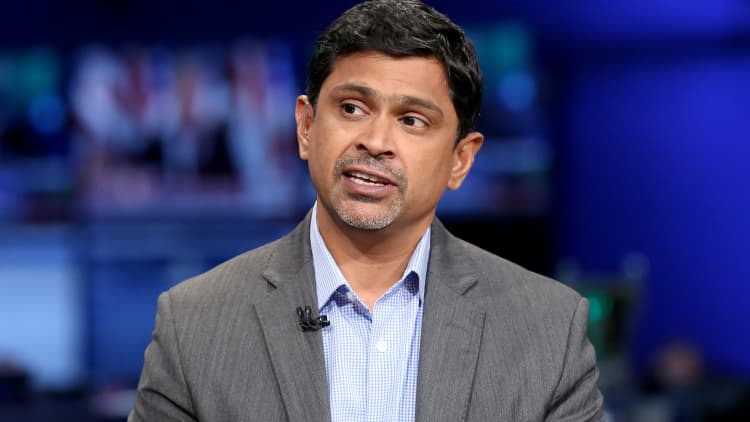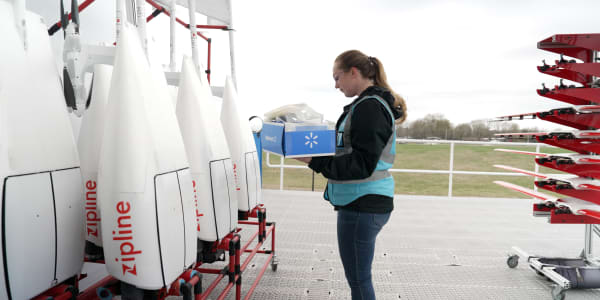
Online home renovation and design giant Houzz didn't start out with a plan to enter the Indian market. Instead, the Indian market came to Houzz, which is based in Palo Alto, California. The site, which draws some 40 million visitors each month, became aware that a million customers and more than 50,000 service providers in India had signed up to use the site. Responding to the strong interest, Houzz launched a custom site for the Indian market in January of this year.
"These homeowners and professionals expressed strong interest in helping us localize Houzz for India, and we're excited to work with them to further tailor the experience," says Adi Tatarko, CEO and co-founder of Houzz, which made the CNBC Disruptor 50 list for the third straight year.
Houzz is one of several companies on this year's Disruptor list focused on India, reflecting the growing importance of the South Asian country of 1.3 billion people as a strong consumer market in its own right. India has a fast-growing economy for a large country, reaching 7.1 percent GDP growth last year. Although a majority of Indians remains poor, a large middle class with disposable income has emerged. Estimates of the size of this new Indian middle class run as high as 300 million. That's more than enough to draw the attention of the U.S. Internet giants as well as domestic start-ups.
More from CNBC Disruptor 50:
How we chose the 2017 CNBC Disruptor 50
Uber vs. Lyft: A race that isn't anywhere near over
Why Warren Buffett is betting on this software start-up
A number of big players have tackled the Indian market. Currently, online retailer Amazon is engaged in an epic battle with Flipkart, an Indian start-up that raised $1.4 billion in its last venture round in April. Ride-hailing service Uber is chasing India's Ola after giving up a solo bid in China and merging its assets there with rival Didi Chuxing.
"The Indian market is far more open than China," says Arun Natarajan, CEO of Chennai-based Venture Intelligence, which tracks private equity and venture investment in the Indian market. "Companies from the U.S. and elsewhere don't have to do joint ventures to come in here."
The accessibility of the Indian market makes it both attractive and treacherous for foreign competitors. "Because India is a very open market, it's cutthroat," says Abhijit "Bobby" Bose, co-founder and CEO of Indian mobile payments provider Ezetap, which turns smartphones into point-of-sale devices. It is making a second consecutive appearance on the CNBC Disruptor 50 list. "There are a million reasons you may not succeed." He says that venture capitalists expecting a quick return on investment in India will be disappointed. "It will take five to seven years."
Ezetap benefited from the chaotic efforts by the Indian government last November to take the most popular denomination bank notes out of circulation to combat corruption. Delays in exchanging old 500- and 1000-rupee bills for new ones led to cash shortages and long queues at banks. The crisis drove many Indians, who had mostly depended on cash transactions, to electronic payment services like Ezetap. "In 30 days our numbers jumped 50 percent to 100 percent," says Bose.
Ezetap distributed 300,000 point-of-sale devices in the fourth quarter of 2016. "What could take five years ended up taking five months." Bose says Ezetap now handles payments at a run rate of $2 billion a year, more than double the volume when it made last year's list.
Cultural nuances
Those who enter the Indian market agree that adjusting to the market is essential for success. Indian states can have wildly different regulations, various degrees of bureaucracy and different languages in addition to English. Web applications need to be optimized for slower internet speeds in some parts of India.
Udacity, an online learning company based in Mountain View, California, was founded by Stanford University artificial intelligence professor Sebastian Thrun, who created Google's autonomous vehicle program. Udacity offers technical courses to 4 million students in 168 countries, including India, its second-largest English-language market after the United States. Offerings include the mobile operating systems Android and iOS, self-driving vehicles and artificial intelligence.
Udacity opened offices in New Delhi and Bangalore, India, to have a local presence and better support its students. The company says its advantage in a crowded online educational market is its close cooperation with industry leaders in developing courses. Graduates earn a "nanodegree" with the exact knowledge companies want their employees to have.
"Our Android program is co-created with Google," says Ishan Gupta, managing director of Udacity India. The company didn't change the content of its courses for India, he says, but it was important to understand the motivations of Indian students. "What is it people look for in education?" asked Gupta. "In the U.S. it might be learning, then jobs. In India it's mostly jobs." And while the Indian economy is growing fast, pricing had to be different in a market where incomes are far lower.
Houzz had to learn that when it comes to home decorating, words can mean different things. "Beach" style in the United States is "coastal" in India. "Traditional" furniture is in traditional Indian style — quite different from the American version. But the "general contractors" label in the United States will be "civil engineers and contractors" on the India site. It turns out many Indian contractors have engineering degrees and are hired based on their academic qualifications.
Both Houzz and Udacity have been attracted to India by the size of the consumer market and its potential. As companies with billion-dollar valuations, they have been able to raise all the money they want in the U.S. market. Udacity has raised $163 million in four venture capital rounds. Ezetap's founders moved to India to launch their company after careers in the United States and have also raised their funding from U.S.-based VCs.
But India has its own expanding venture capital market. Venture Intelligence, which tracks VC investments in India of $20 million or less, reported that Indian VCs made 405 such deals involving $1.4 billion last year, still a small fraction of the $69 billion of VC invested in the United States in 2016.
But as Ezetap's Bose points out, the market in India is relatively young. "Everything is maturing," he says. "Everybody is in their teenage years."
— By Joel Dreyfuss, special to CNBC.com







